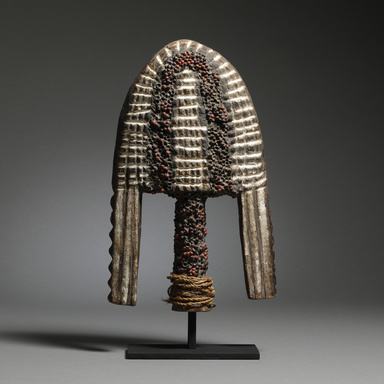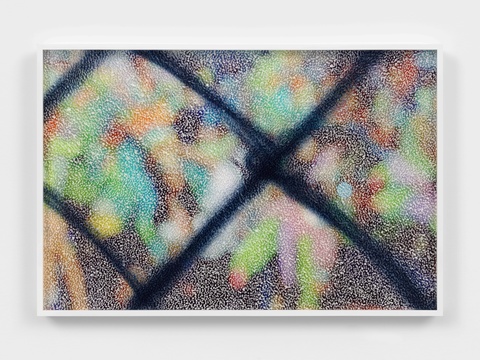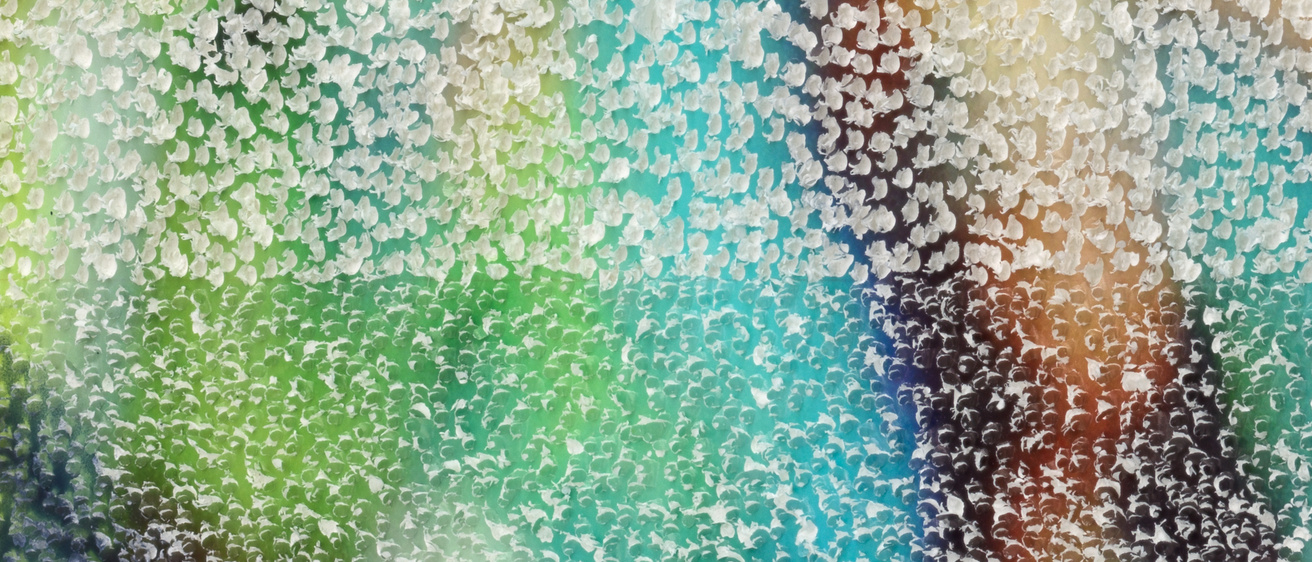
On view March 2025 - October 2025
This installation celebrates some of the many artworks that have entered the collection within the last decade. Select African art acquisitions are joined by highlights from the museum’s growing photography holdings.
Calling attention to the importance of individual agency in African art, rather than artistic styles associated with culture and ethnicity, labels for many recent acquisitions in the installation include the personal name of the artist, such as Osei Bonsu, Kwaku Bempah, Sikire Kambire, and Nicholas Mukomberanwa. Active throughout the 20th century, these artists worked for both local patrons and the global marketplace in Western and Southern Africa. Highlights also include 20th century bark cloth from Fiji and Samoa and a Koro-style dance crest collected by Roy Sieber in Nigeria in 1958, just after he completed his PhD in African art history at Iowa. Like its sculptural counterpart displayed elsewhere in the museum, Donté K. Hayes’ etching, Guardian, responds to the Stanley’s historical African collection and reflects a recent shift toward the acquisition of work by emerging artists in Global Africa.

The Stanley’s photography collection encompasses many impulses that have governed image-making since these reproductive technologies emerged two centuries ago, but this remains an area of focused growth. Included here are prints by Barbara Morgan, who established a new representational aesthetic for modern dance. For decades, Richard Buswell has tracked the remains of Western homesteads and mining camps. Rodrigo Moya posed the artist David Alfaro Siqueiros against the epic motion of one of his murals. To “make a moving image still,” Paul Anthony Smith uses a twist on picotage, a textile-printing technique, to prick the surface of a photograph taken during Carnival in the Caribbean. This technique evokes scarification as it raises questions about the legacies of colonialism and cultural tourism.
